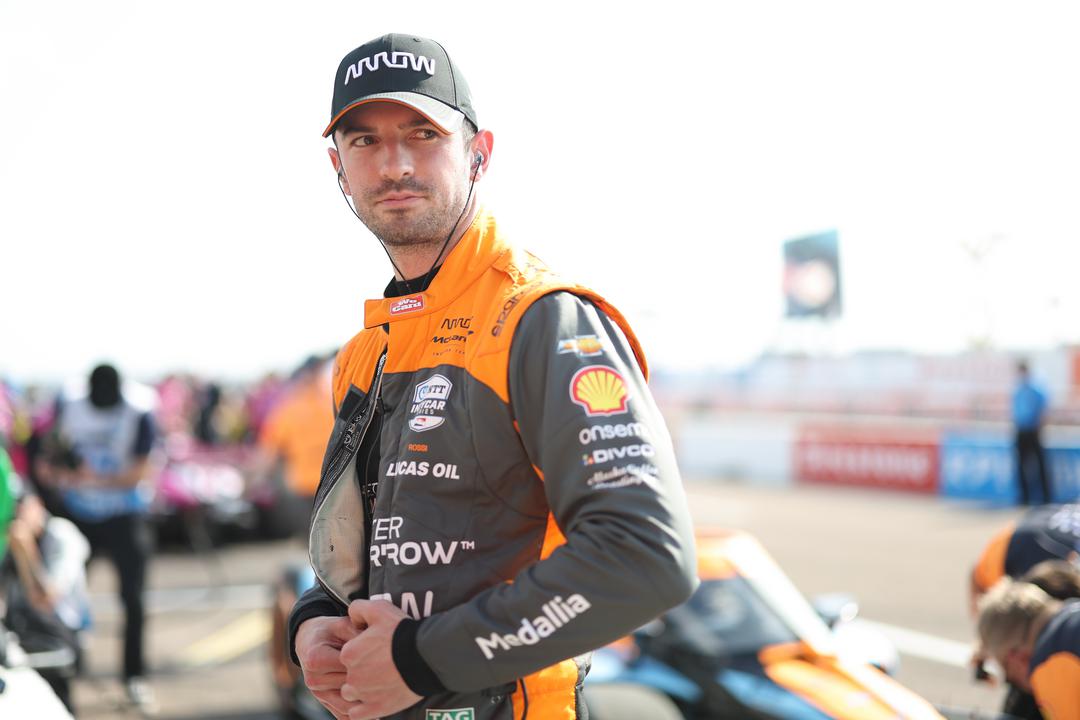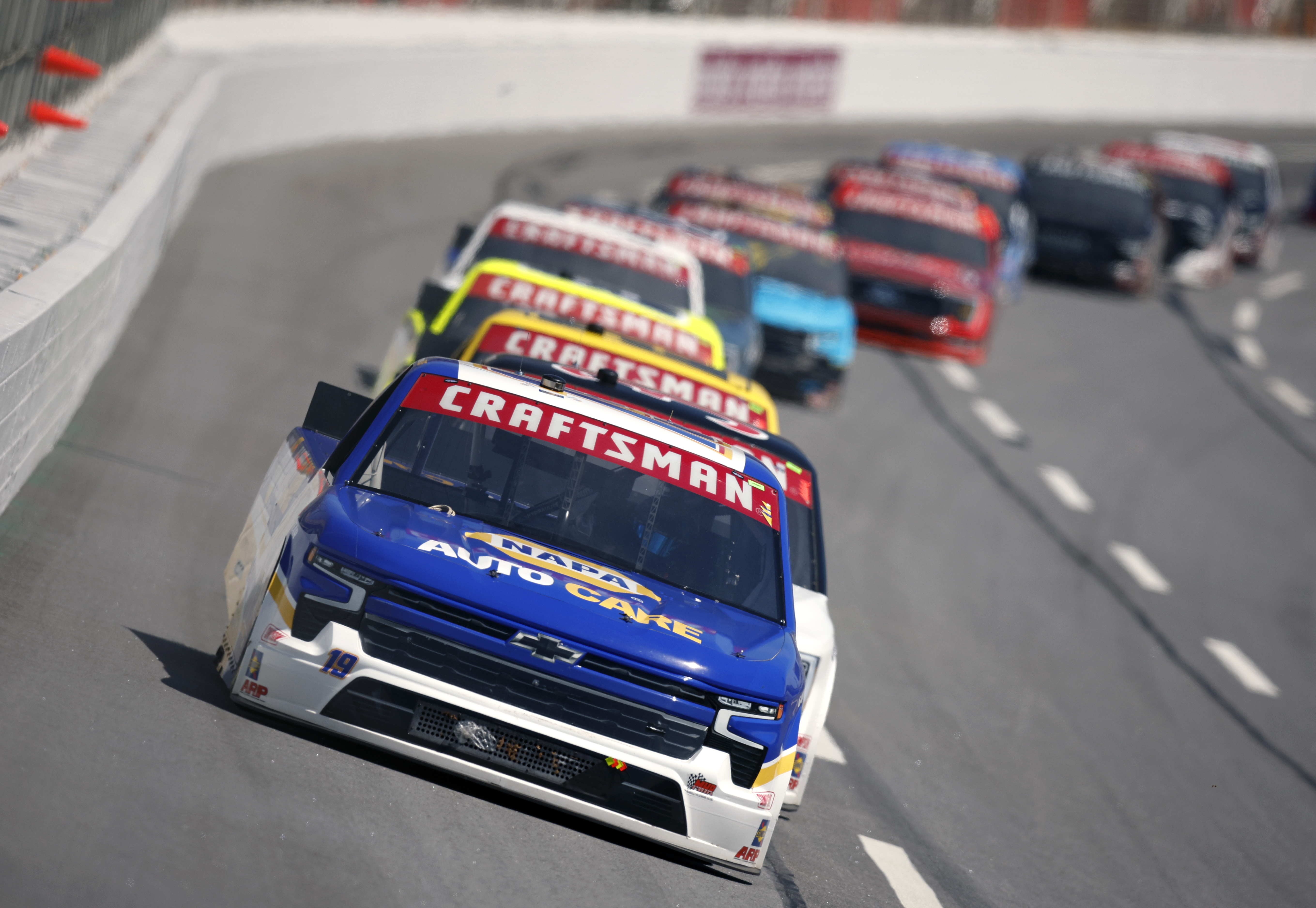until Abu Dhabi Autonomous Racing League

For years now, IndyCar has altered aero on its cars, run special sessions to improve track conditions and even tried to scrub the asphalt clean of troublesome surface compounds left by NASCAR.
Nothing has worked perfectly, but the teams and drivers are excited that this weekend could help usher in a new era of racing at Texas Motor Speedway.
It has only been six IndyCar events at the track since Graham Rahal won by 0.008s there in 2016, and even though last year’s event was a barnstorming finish with Josef Newgarden passing Scott McLaughlin on the last corner to win by 0.0669s, the two races felt alien in comparison to one another.
That’s because the 2016 race happened before a repave, when drivers could race three and four wide seemingly without issue. Watch the videos above and below and you really get a feel for how this has almost become a totally different track.
After the repave NASCAR applied a compound called PJ1 – you can see this in videos and pictures, a black stripe around the middle of the track – to the surface for NASCAR Cup Series races, but that really hurt IndyCar and since the COVID pandemic it’s been almost a one-lane race circuit.
Strides were made last year with aero changes and a special session with cars running higher up the track to get rubber down and give it grip, but the race was largely still single-lane apart from the odd daring overtake.
If the track isn’t two-wide from the start, you tend to get cars stuck to the bottom of the track which then pushes the marbles from the degrading tyres up the track, making it very slippy and compounding the problem further. But this year, IndyCar has several new ideas to try to get its Texas racing back on track.
A summary of the changes for 2023
Three new aerodynamic options for the car
Teams can make set-up changes between qualifying and the race
All cars will run the higher line and rubber in the track in a special session
NASCAR is supporting for the first time post-pandemic, so will lay down rubber
The above combination of changes has given the drivers real hope that Texas can offer up a thrilling race this year.
Part of that is down to the aero parts. A winglet attached to the underneath of the front of the sidepod – called bargeboards in the States – and a bigger sidewall piece which sits next to the rear wheels. The latter is really important as it boosts downforce without creating so much dirty air that cars can’t overtake in traffic.
Also, a piece called a ‘wicker’ which sits in the hole at the front of the floor ahead of the sidepods is no longer mandatory as it was last year.
One immediate effect of all the changes is a much faster pace – in practice one on Saturday morning alone the top 18 cars were quicker than last year’s pole lap.
New updates for the #PPG375.
Check out the changes to the cars for this weekend at @TXMotorSpeedway.
MORE INFO: https://t.co/7VjbWabZdU pic.twitter.com/qbcUszIeap
— NTT INDYCAR SERIES (@IndyCar) March 31, 2023
“There’s no doubt there’s going to be a lot of load, at least a couple of hundred pounds, maybe more depending on what you take or don’t take,” says last year’s winner Newgarden.
“I think that’s going to tighten everybody up. We tightened up last year, we’re going to tighten up more.
“It’s still the conversation of [how to make] the second lane [usable]. How much can we bring that in?
“It’s funny because I’ve been asked about finishing the race last year and the more I think about it, the more I think I should have got up there [to the high line] sooner.
“It worked. So I think that brings hope, making the second lane work even better this year.
“There’s more load, there’s more opportunity to build rubber there with the Truck series and our high-line practice.
“The tough thing about it is, the closer you bring everyone together, the harder it is to separate yourself.
“This weekend’s going to be tough to find the difference-maker between us and the competition.”
These parts will allow for more downforce which in turn will give the drivers more grip during the race and to move around the race track if the high line is usable.
Alexander Rossi says the drivers have been asking for more downforce for some time, but there are other significant factors to think about in implementing those changes, too.
“It’s continuing to be a step in the right direction,” says the new Arrow McLaren driver attempting his first oval event with the team.
“We’ve said we needed more downforce here and IndyCar has listened. Every year they’ve brought more and more.
“Every year they are limited by kind of what Firestone will allow them to do.
“IndyCar, if they could have it their way they’d just pile everything on we want, but there are loads and stress on the tyre which is obviously very important to think about.”

The good part is that there’s little risk of one team finding something absolutely extraordinary with the ‘new’ parts, because they are only new as a package. The teams and drivers have worked with these parts individually before, so those making the gains will be balancing a combination of the parts.
Some teams that might have an advantage are AJ Foyt, Dale Coyne and Juncos Hollinger, who all tested at the venue on March 16 with their rookie drivers Benjamin Pedersen, Sting Ray Robb and Agustin Canapino.
That was a chance to get a test in to trial set-ups as well as acclimatise those rookies. It certainly appeared to have a big effect on those teams.
David Malukas – Dale Coyne’s rising star and an oval podium finisher already – said “our baseline completely changed” after the test.
He added: “We had a list going into this weekend before his test, and after his test we’ve changed everything out and we know roughly what’s going to be different.”
That’s a big chance for those small teams to steal a march on the opposition, although that test was done in much cooler conditions so the teams will have to tweak and adapt for that.
The other changes throw up more unknowns. The NASCAR Truck Series will help with rubbering in, and the weather could be warm and sunny or cloudy and raining. A hotter race would make for more tyre degradation and in-turn a more closely-fought encounter, but it’s unclear if that’s the weather we’ll get before rain likely moves in the afternoon.

What should be better is the rubbering-in session on Saturday afternoon, which all drivers will take part in instead of the seven that did it last year. Not all of them did it properly last year either, skating down to the lower lane. The field is also up another car to 28, so with all of those cars out, that’s a huge increase to combine with NASCAR’s running in rubbering-up the track.
It appears that NASCAR has switched from the PJ1 compound to another resin which seemingly doesn’t last as long on the asphalt, so that should also make for more grip on the track this year.
Take a morning cruise with @FRosenqvist around @TXMotorSpeedway. #INDYCAR // #PPG375 pic.twitter.com/6xSfsAMdVQ
— NTT INDYCAR SERIES (@IndyCar) April 1, 2023
The changes between sessions are also hugely significant. While it’s going to be a bonkers day for the teams with practice, qualifying then two practices, unlike last year, teams will be able to make extensive changes after qualifying and before the race.
Teams will have to quickly make changes after practice and then go through pre-qualifying inspection, but then instead of their cars going into parc ferme after qualifying like last year, changes will be allowed on pitlane while they wait 30 minutes to begin the rubbering-in session practice, and then again in the final practice which follows.
Saturday timetable
0810-0900 Practice
0900-115 Make car changes then pass inspection
1115-1215 Qualifying
1215-1245 Make race set-up changes
1245-1315 Rubbering-in practice in race set-up
1330-1430 Final practice to perfect race set-up
That means teams can have a qualifying and race set-up respectively, without having to compromise either.
What’s clear is that all of these small changes and circumstances have many of the drivers extremely excited about the prospect of a better Texas race than in recent years.
Even with its issues, last year’s was a good race and produced the closest finish of the season, but despite that, there were big areas to improve and the changes made for this weekend might go further to solving those than IndyCar has managed in recent previous events.



